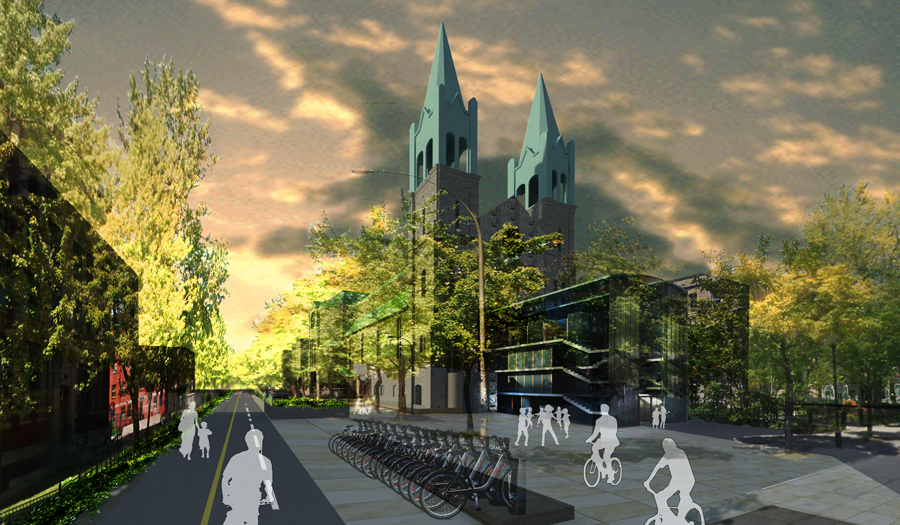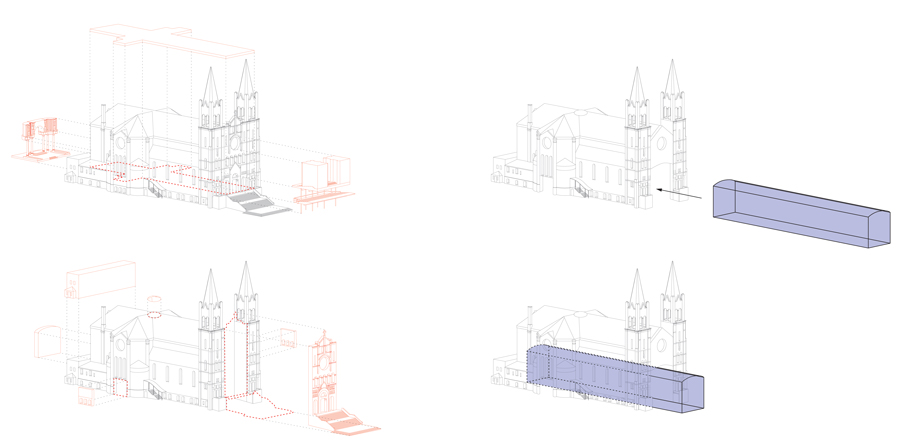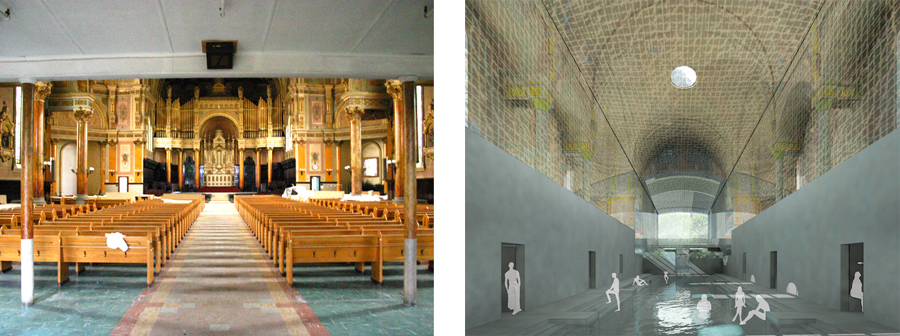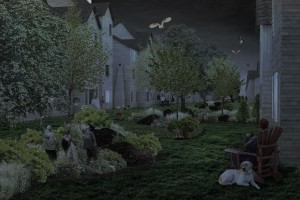ABSTRACT by Emad Ghattas
Québec’s historical attachment with Roman Catholicism is obvious through the great amount of churches throughout the province. Changing attitudes in Québec (in parallel with other regions around the world) are leading to a chronic desertion of spaces of worship. Conceived as the heart of a community, churches successfully imposed their presence onto the built and social fabrics of the neighbourhoods they serve. In today’s context, this relationship is shifting, and communities are now striving to re-engage with the churches they have abandoned. However, the sacred nature of these buildings often sets a specific way to look at them, which can limit a potentially innovative reuse. Out of this concern, how can a church regain its status as a public space in a plural environment and preserve exceptional qualities of its architecture?
Looking at the case of the abandoned Roman Catholic church Très Saint-Nom-de-Jésus in Montréal, this thesis challenges the current attitude on church preservation by converting the building into a bathing space, which requires the existing architecture to be responsive to the proposed new program. Characteristic elements of church typology, such as the quality of light and the ritual, are preserved and revised with a contemporary definition, opening the building to a more diverse society. This strategy of valuing intangible elements of church architecture has lead to a proposal that demonstrates the responsiveness of this typology to regain its role of a space for the public in an increasingly multicultural community and break the traditional way we look at a church.
Supervisor:
Anne Bordeleau
Committee Members:
Rick Haldenby, University of Waterloo
Tammy Gaber, University of Waterloo
External Reader:
Paul Sapounzi
The Defence Examination will take place: Wednesday, June 19, 2013 10:00 AM ARC 2026









Leave a Reply